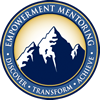 Have you ever tried to remove a nut or bolt with pliers and it doesn’t budge, but when you use a wrench and get some leverage suddenly it is easy to move? That lever is such a clever tool – it is very handy and very simple.
Have you ever tried to remove a nut or bolt with pliers and it doesn’t budge, but when you use a wrench and get some leverage suddenly it is easy to move? That lever is such a clever tool – it is very handy and very simple.
Leverage is defined as a rigid bar that pivots about one point and is used to move an object at a second point by a force applied at a third point. I remember as a boy watching my dad and other men use this principle when they couldn’t pry an object loose (the nut on a tractor tire for instance). When it was obvious nothing was going to budge, there would be a search around the garage for a pipe that would fit over the end of the wrench, making the handle much longer. Once the pipe was securely in place, it was like someone had loosened the nut while we weren’t looking. The length of pipe had added leverage to the equation and the amount of force now available was much greater and the results were as desired.
So how do we apply this to achieve a greater outcome? How do we leverage our key skills?
Most people don’t leverage their own knowledge and skill-set but instead use just a fraction of what they have within themselves.
The first step is to take inventory of your assets. This doesn’t mean to list out your home, car, checking account balance… this means to list out your knowledge, your skills and your experience.
Next, explore how to get the full advantage of your asset inventory. If you own a computer or smartphone, you are frequently prompted to upgrade an application or program. There is new information available that will make your computer or phone work better (well one hopes, not always the case!). When was the last time you updated or upgraded your knowledge base? What was the last book, course, lecture or program you engaged in?
So now you have an inventory and you know what needs to be upgraded. These are your key skills and strengths that you can now improve upon. You may ask why focus on your strengths and those assets that are already developed. Why not focus on weaker skill-sets. This is where you need to understand that the highest yield and the most efficiency comes from developing strengths rather than improving upon weaknesses. Leave your weaknesses for someone else who exhibits those as strengths.
This allows you to leverage your key skills and will help you improve upon areas where you show the most potential.

Comments are closed.